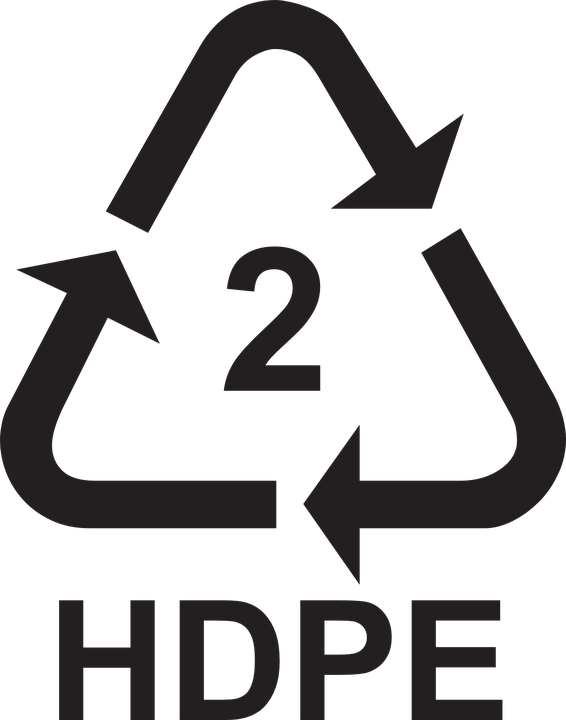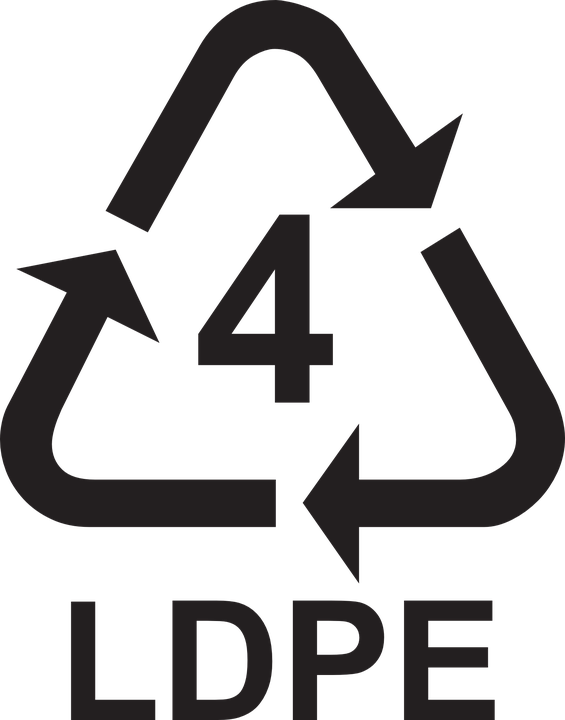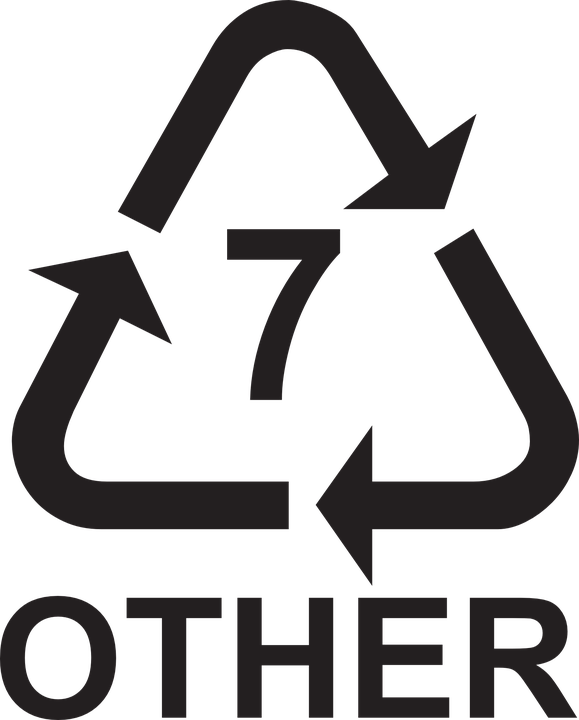
PET = Polyethylene Terephthalate
PET is the most commonly used type of plastic worldwide and mostly used for soft drink / water bottles or food packaging due to its strong ability to prevent oxygen from getting in and spoiling the product inside.
Used for
Soft drink bottles
Food packaging
Ease of recycling
It is easy to recycle and is used to make more RPET bottles. The “R” makes it easy to identify that the material includes recycled content.
In fact, PET bottles are the most widely recycled plastic in the world!
Next life
Drinking bottles
Tote bags
Furniture

HDPE = High Density Polyethylene
HDPE is incredibly resistant and much stronger and thicker than PET due to its long unbranched polymer chains and thus used for a lot of different products.
Used for
Plastic milk bottles
Juice containers
Shampoo and detergent bottles
Grocery bags
Recycling bins
Lids
Playground equipment
Ease of recycling
It is one of the easiest plastic polymers to recycle and thus accepted at most recycling centres in the world.
Next life
Garden furniture
Pipes
Milk cartons

PVC = Polyvinyl Chloride
Polyvinyl chloride is the world’s third-most widely produced synthetic plastic polymer. In its rigid form, PVC is largely used in the building and construction industry to produce door and window profiles and pipes (drinking and wastewater). When mixed with other substances, It can be made softer and more flexible and applied to plumbing, wiring, and electrical cable insulation and flooring.
It used to be the second most widely used plastic resin in the world (after polyethylene), before the manufacture and disposal process of PVC has been declared as the cause of serious health risks and environmental pollution issues.
Used for
Blister and cling wrap
Detergent bottles
Pipe and window fittings
Thermal insulation
Car parts
Ease of recycling
PVC is still hardly recyclable and thus rarely accepted by recycling programs. Therefore, it should be avoided whenever possible.
Next life
More PVC products

LDPE = Low Density Polyethylene
Contrary to HDPE, LDPE has the simplest plastic polymer structure of all the plastics, giving it a thinner and more flexible design. This makes it easy and cheap to produce and process.
Used for
Food and shopping bags (e.g. frozen food and bread bags)
Coating for paper milk cartons and hot & cold beverages
Food storage containers as well as container lids
Squeezable bottles (e.g. for honey)
Magazine wrapping
Ease of recycling
LDPE is quite difficult to be recycled but it can be recycled by special facilities.
Next life
Bin liners
Plastic furniture
Floor tiles

PP = Polypropylene
Polypropylene is the second-most widely produced commodity plastic and its market is forecasted to grow even more in the following years. Hard and sturdy, it can withstand high temperatures.
Same as LDPE, PP is considered a safer plastic option for food and drink use. It’s a good material for baby milk bottle, as long as made of food-grade plastic and identified as “BPA-free.”
Used for
Plastic straws
Disposable cups
Bottles caps
Hot food containers
Microwave meal trays
Ease of recycling
It is generally easy to recycle although recycling is limited due to difficulties in collection.
Next life
Food containers
Clothing fibres
Speed humps

PS = Polystyrene
Polystyrene, commonly known as styrofoam, can be solid or foamed. It is very cheap and thus it can be found everywhere, often used to make single-use products such as coffee cups, plastic food boxes or plastic cutlery.
PS is also highly inflammable and dangerous as it can leach harmful chemicals, especially when heated (which often happens because it’s found in disposable take-out containers and often heated up in the microwave with the food inside).
As PS is also very light-weighted it is blown by the wind and floats on water, secondly it is regarded as not biodegradable. Therefore, from an environmental point it’s among the worst types of plastic.
Used for
Coffee cups
Takeaway boxes
Plastic cutlery
Protective packaging
Ease of recycling
It is very difficult to recycle, if it does get recycled it is often used to make more packaging. It isnot accepted in curbside collection recycling programs and is not separated and recycled where it is accepted.
Next life
More packaging

Other
If plastic cannot be identified in the six types above-mentioned, then it will be included in group number 7. Plastics that may be layered or mixed with other types of plastics, such as bioplastics belongs also in group 7.
Polycarbonate (PC) is the most common plastic in this category, isn’t used as much in recent years due to it being associated with bisphenol A (BPA), a compound that is on the list of potential environmental hazardous chemicals. BPA does not decompose, meaning it will stay in the ground and eventually find its way into water bodies and the soil.
Used for
Water bottles
Ketchup containers
Baby bottles
Salad bags
Crisp packets
Lenses for sunglasses, sport glasses or similar
Ease of recycling
PC is very difficult to recycle. Usually, products made of this type of plastic is almost never recycled and thus goes into landfill.
Next life
Goes to landfill

)
)